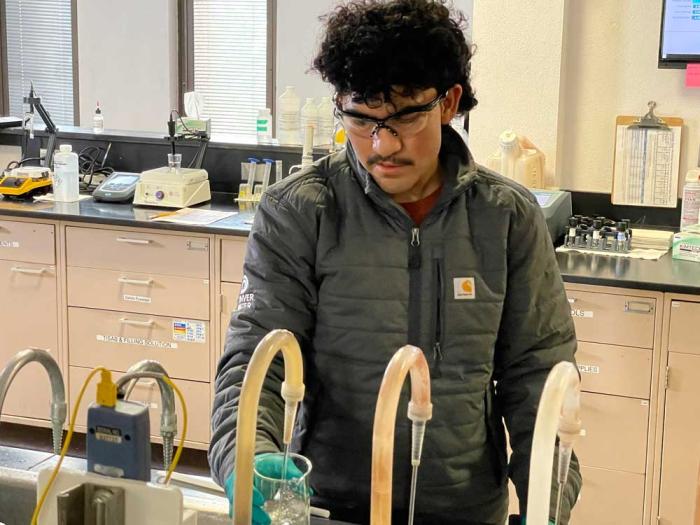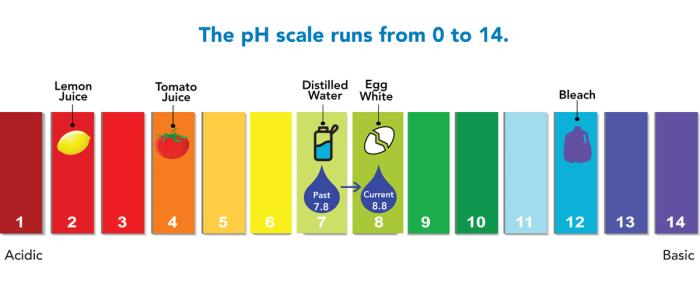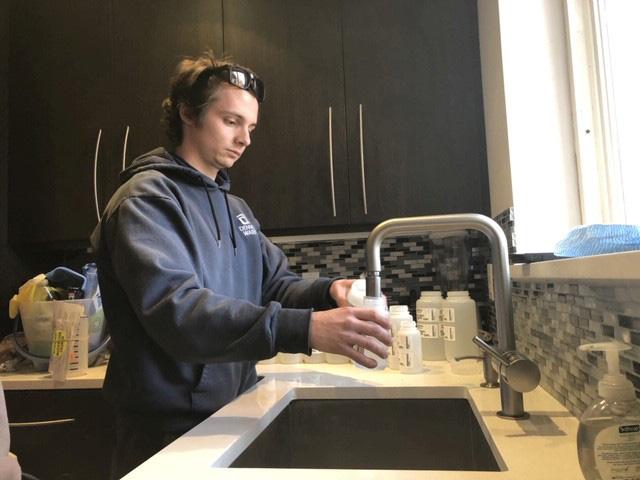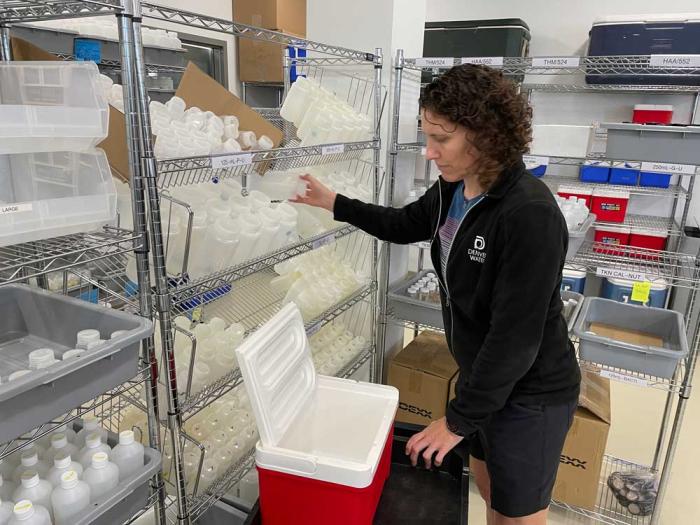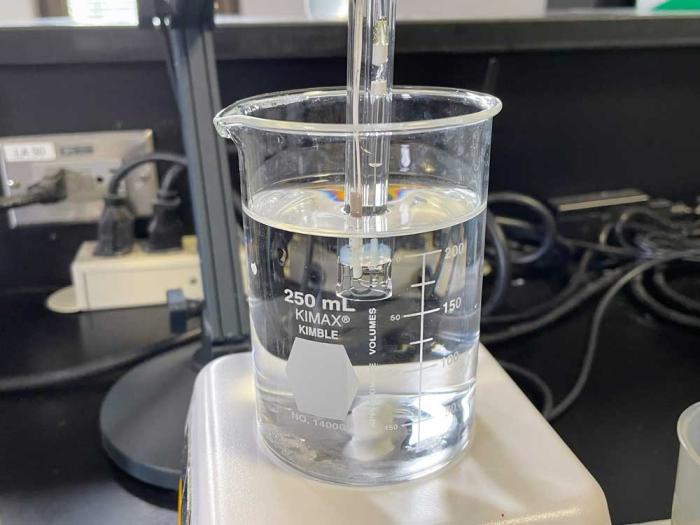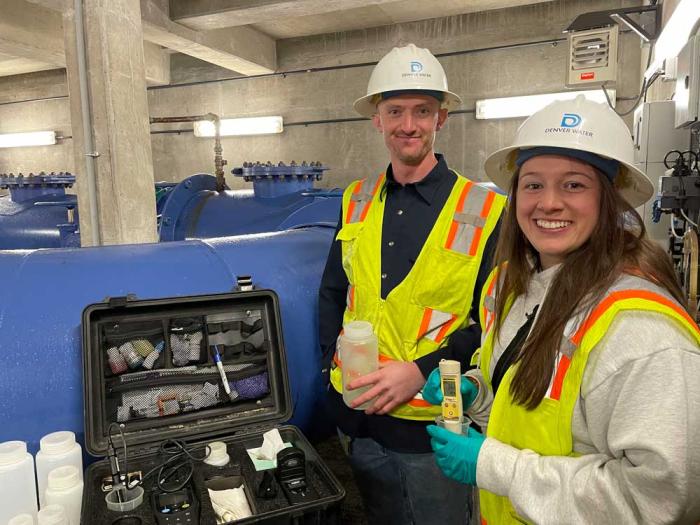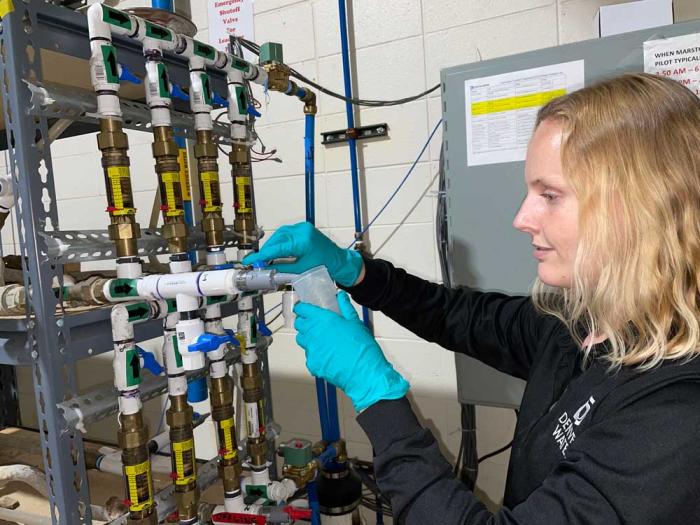Fighting lead in drinking water at the source
The cellphone video is grainy and shaky.
“Are you guys ready?” asks a voice, calling out to the operators of Denver Water’s Marston Treatment Plant on the other end of the speaker phone. "Hey Marston, are you guys ready?”
“Sure,” comes the confident response. “We’ve been ready, man!”
“All right. … Three. Two. One. Go.”
And with that, on March 3, 2020, a plant operator at Denver Water’s Foothills Treatment Plant, the largest in the utility’s system, reached out and tapped a key on a computer keyboard.
It was, according to one longtime water professional, “a NASA-like moment.”
Watch that moment:
That tap — and similar taps at Denver Water’s other two drinking water treatment plants — collectively raised the pH level of the water Denver Water delivers to homes and businesses. The higher pH level, in turn, reduces the risk of lead in customers' drinking water.
There is no lead in the water Denver Water delivers, but lead can get into the water as it passes through customers’ own lead water service lines and household plumbing and faucet parts that contain lead.
Raising and maintaining the new, higher 8.8 pH level for water delivered across Denver Water’s 335-square-mile service area that includes the city of Denver and surrounding suburbs is the largest part of the utility’s ground-breaking Lead Reduction Program.
The more visible parts of the Lead Reduction Program, which launched in 2020, involve locating and replacing between 64,000 and 84,000 customer-owned old lead service lines in Denver Water's service area at no direct cost to the customer by 2035. It includes providing water pitchers and filters certified to remove lead to more than 100,000 households enrolled in the program, and reaching out to customers to educate them about the program.
Less visible is the higher pH level of the water Denver Water delivers to customers.
That's the piece that protects each of the 1.5 million people who rely on Denver Water for their water supply from the health risks posed by lead that may be in their old lead water service lines, plumbing and faucets.
And it’s had a widespread impact.
Denver Water’s customers are better protected from the risk of lead.
And the work involved in raising the pH level and keeping it there, day after day, hour after hour, as millions of gallons of water moves from the utility’s treatment plants, through its distribution system, to customers’ homes and businesses, has created new science, improved teamwork and generated immense pride among the people involved.
“It’s really brought us together, because we all focus on pH and talk about it so much more than we used to. Everyone is involved,” said Patty Brubaker, who as plant manager and South System asset manager oversees all the assets and facilities related to Denver Water’s Marston and Foothills treatment plants on the southwest side of the metro area.
About this series: Raising and maintaining a higher pH level under Denver Water’s groundbreaking Lead Reduction Program has touched multiple teams across the state's largest water provider.
In coming weeks, we'll share stories via TAP that look at how the effort touched different groups of Denver Water employees, changing the work they do every day and bringing them closer together.
Collectively, the stories demonstrate the massive effort involved in doing something that had never been done before in order to meet one goal: To better protect Denver Water’s customers by reducing the risk of lead in their drinking water.
“Denver Water threw everything it had at this,” said Nicole Poncelet-Johnson, director of the utility's water quality and treatment section.
Part two: How Denver Water engineered a permanent solution to a legacy problem
Part three: Hitting a target of 8.8 on the pH scale
Sign up to get Denver Water’s free, weekly TAP email for stories about Denver Water, its people and the water we deliver to 1.5 million people.
Customers better protected
PH is measured on a scale of 0 to 14, with 7 considered neutral, meaning there’s a balance between how basic or acidic the water is.
Raising the pH level of water makes it less acidic and therefore less corrosive. And when water touches a lead pipe, water with a higher pH reacts to the metal and strengthens an existing protective coating, reducing the potential for lead or other metals to get into the water.
After Denver Water raised pH levels to 8.8 in early March 2020, lead levels dropped significantly, according to the utility’s regular tests of drinking water taken from faucets in customer’s homes that are known to have lead service lines.
For the people who had worked on Denver Water’s yearslong efforts to combat the effects of old lead service lines, watching test results with lower lead levels roll in through the weeks and months following the spring 2020 increase in pH levels was elating.
“It’s like that moment when you’re at a soccer game and you shout ‘GOOOAAAAALLLL!’ I was like ‘YES! It’s working!’” said Nicole Peschel, a water quality planner who for years has worked closely with the homeowners who have lead service lines and allow Denver Water to regularly test their drinking water for lead.
“We still will need to replace their service lines. Customers enrolled in our Lead Reduction Program still need to use the water filters, but the levels are lower. The pH increase definitely increased the protective coating. Our customers are better protected,” she said.
“It worked.”
The proof lies in the test results of samples Peschel and her team collected from the homes of customers with lead service lines.
Learn more about Denver Water’s Lead Reduction Program.
In fall 2019, before Denver Water raised the pH level of the water it delivered, the highest 10% of those test results — known as the 90th percentile under the Environmental Protection Agency’s Lead and Copper Rule, the set of regulations that govern lead in drinking water — were at 11 parts per billion.
(Note: The 2019 test results were below the 15 ppb level at which the Environmental Protection Agency requires a utility to take action under the federal Lead and Copper Rule.)
The spring 2020 test results, as the water carrying the higher pH level started flowing, dropped to 6.1 ppb. By fall 2020, the 90th percentile test results dropped to 4.1 ppb.
The results Denver Water has seen — not only the significant drop in lead levels in the test results, but also the utility’s ability to maintain an 8.8 pH with relatively little variance across 3,000 miles of water delivery pipes — has turned heads across the water industry.
Inquiries have come from water utility professionals across the country and around the world, with callers asking for details on how Denver Water tackled the issue of old lead service lines.
“What our people are doing, the results that they’re getting, it’s amazing,” said Nicole Poncelet-Johnson, director of the utility’s water quality and treatment section.
“Industry experts, process engineers, people with master’s and Ph.D.’s in this, they say it’s phenomenal how well Denver Water is managing pH. The work that’s coming out of the water quality and the treatment group here is furthering the science and technology of this issue.
“It’s working, and we continue to learn and make it better.”
A team working with the equipment used to monitor pH levels across Denver Water’s distribution system is studying the next generation of sensors to see if they might be integrated into the system.
And a troubleshooting team continues to run tests on the old lead service lines pulled from the ground years ago, learning more about how the pipes react over time.
“The data we’re collecting during our testing on old lead service lines is advancing our understanding, as Denver Water as well as the industry, of the science of lead reduction in drinking water. We are proud of the work the organization is doing to advance that science and protect public health,” said Ryan Walsh, manager of the water treatment engineering section at Denver Water, whose team tested various treatment options on old lead pipes and later planned, designed and executed the treatment plant systems involved in increasing the pH level.
So, for Tom Roode, the head of Denver Water’s operations and maintenance division, that moment captured on a shaky cellphone video in early March 2020 signifies two things.
It’s a moment that’s as close to a NASA-like launch sequence as you can get in the water industry.
And it’s a demonstration of the capabilities of the people who work at Denver Water.
“Lots of work by a lot of people led up to making that moment look easy,” Roode said.


